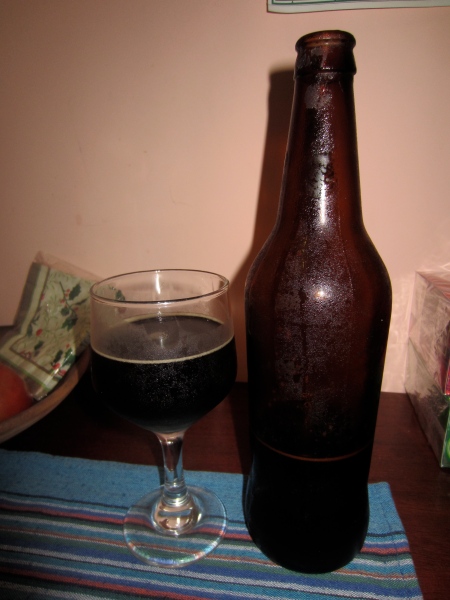In the last few months my primary computer with all my recipes stored on it bought the farm, so now I’ve shifted most of my recipe making over to Brewtoad, which is a decent enough platform for my current needs. The upside is that it’s especially easy to share the recipes here without excessive copying and pasting. So, to summarize my homebrewing of the last few months, here are the links to the recipes I’ve been using (each bullet point is a separate brewday, which means that all the recipes on it share the same mash, whether they were parti-gyled or divided evenly):
- Barleywine no. II and City of the Rings (American Pale Ale no. II): Both are now bottled. The APA is citrusy, bitter, quite tasty, although it lacks a bit of body to balance the hoppiness. The barleywine is still harsh, and much more citrus infused than I’d expected, but the body certainly balances it out better.
- Saison no. VI brewed as a Wit, Saison Blanche (no. VII), and Bolivianer Weisse no. II: The “wit” saison might be the best beer I’ve brewed here: a mouthful of citrus, but with the dry finish of a saison, full-bodied and perfect for summer. I was a little nervous about using so many Columbus hops in a Wit, but it worked out perfectly. The Saison Blanche is in secondary (for lack of bottles) and the Bolivianer Weisse got racked onto pasteurized tumbo, which tastes like a cross between mango and peaches.
- Belgian Amber no. I and Old Ale no. I: The Old Ale was bottled last week and I have yet to try it. Both these suffered from some kind of infection–probably lacto–and I’ve sinced moved all my sour and wild cultures and fermenters into a sealed cooler. Hopefully that will keep that under control.
Likewise, I just cracked a bottle of my first wild ale that was parti-gyled off a Tripel brewed long ago and fermented with Brett Drie and my house Lactobacillus culture, and it was delicious. Effervescent with no head, crystal clear, tart, dry, just a tiny bit funky, a hint of malt on the end, and thoroughly refreshing for the summer months that are looming overhead. It came off like I a more complex version of my sour wort Berliner Weisse.
Today I’m managing to sneak in a quick morning brew, another double brewday focusing on wheat. The results I’ve had with the flaked wheat I found here are much better than with the raw/torrified wheat that’s widely available, and I recently managed to build up starter from the dregs of a Erdinger Pikantus Dunkelweizenbock, and I want to try it out. Unfortunately I don’t currently have my kitchen scale, so I’m kind of ballparking everything. The mash is roughly 50% malt, 40% flaked wheat, 10% rolled oats, and I’m aiming to collect 10 L of wort divided into two boils. The first will be for the weizen using the Pikantus dregs, hopped with 2-3 g of Columbus at 60 mins, and 2-3 g of Palisades at 20 minutes. The second will be based on Extreme Brewing’s “Kiwit,” with 2-3 g of Columbus at 60 mins, 2-3 g of Willamette at 20 mins, and 1/4 tsp of coriander at 10 mins. The actual recipe calls for adding cubed kiwis at the end of the boil, but I don’t have any on hand, so I’ll add those after a couple days in primary. Or if kiwis aren’t available (produce is truly seasonal here), I’ll go with something else tropical, like mango, tumbo, regular passionfruit, or pineapple.


